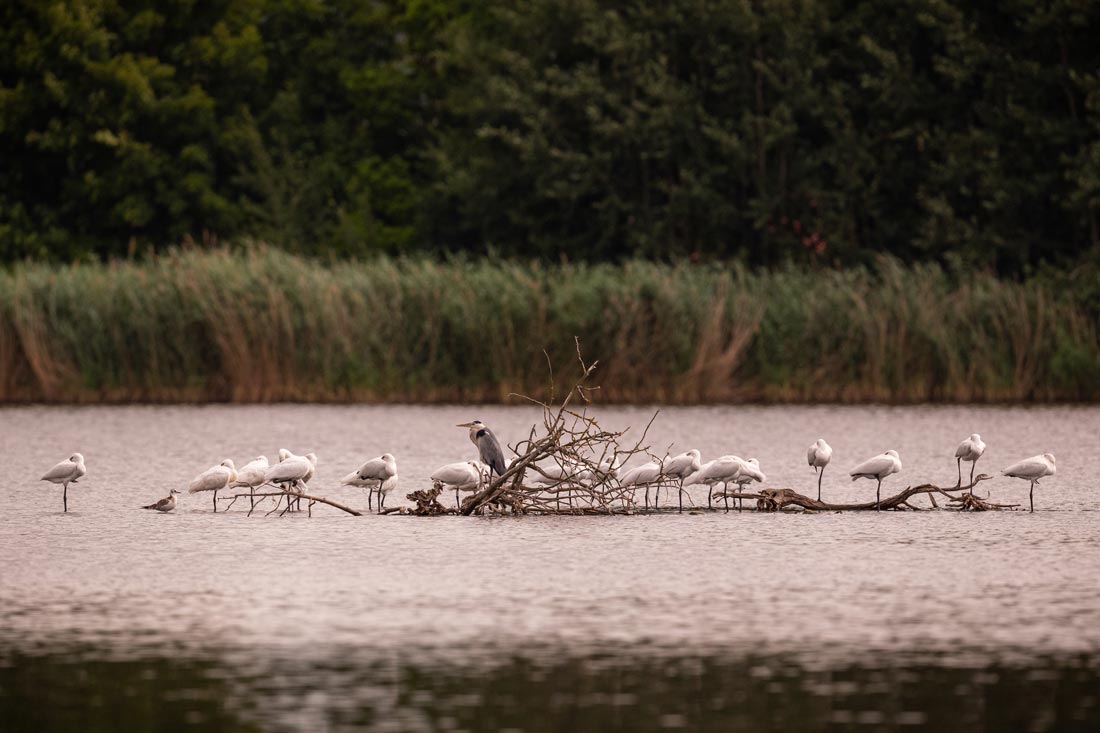Who Leaves, Who Stays? Bird Migration vs. Winter Residents in the Louisiana Swamp

Every season tells a new story in the Louisiana wetlands. The swamps that surround Marrero, Barataria, and the wider Southeast region are alive with constant change, especially when it comes to the birdlife that fills the skies, trees, and marshes. Some species only stop by for a short visit, while others make this their home year-round. Understanding who leaves and who stays helps explain why Louisiana’s wetlands are some of the most important habitats in North America.
The Great Migration
Each fall, millions of birds pass through Louisiana as part of their journey along the Mississippi Flyway. This natural highway stretches from Canada all the way down to Central and South America, and Louisiana serves as one of its most critical stopovers.
For these birds, the swamp is like a pit stop on a marathon. They arrive tired and hungry, needing to refuel before continuing south. Ruby-throated hummingbirds feed furiously on nectar before crossing the Gulf of Mexico. Warblers dart through the cypress branches searching for insects. Shorebirds pick along the mudflats, storing up energy for the miles still ahead.
To watch these migrations is to witness an international event, played out in feathers and flight. Each wingbeat tells the story of survival, instinct, and the need to follow a cycle that has been repeated for thousands of years.
Winter Residents
While some species move on, others decide to stay. Louisiana’s mild winters and abundant food make it an attractive place for birds escaping harsher northern climates. Waterfowl like gadwalls, northern shovelers, and pintails settle into the marshes. Raptors such as red-shouldered hawks patrol the skies, while barred owls keep watch from the trees.
Then there are the true residents—the birds that never leave. Great blue herons stalk the shallows. Woodpeckers echo through the forests. Songbirds find shelter among the cypress and tupelo trees. These year-round neighbors give the swamp its familiar rhythm, no matter the season.
Why Both Groups Matter
Migratory species and resident birds may have different lifestyles, but both are critical to the ecosystem. Migrants bring bursts of energy and diversity, spreading seeds, pollinating plants, and keeping insect populations in check during their stopovers. Resident birds maintain the balance year-round, controlling pests, recycling nutrients, and forming the foundation of the swamp’s food web.
Without healthy wetlands, both groups would struggle. Migrants would lose a safe place to rest and refuel, while resident species would face declining resources. Protecting the swamps means protecting both types of birds, along with the countless other species that depend on them.
A Seasonal Cycle
The beauty of Louisiana’s wetlands lies in their constant change. Spring brings a northbound rush, as hummingbirds and warblers return from the tropics. Summer is dominated by resident species raising their young. Fall begins the southward push, with skies filled once again by travelers. Winter belongs to those who stay, filling the swamps with their calls and activity.
This cycle repeats itself every year, creating an endless rotation of arrivals and departures. For visitors and locals alike, there is always something new to see.
Lessons from the Swamp
Watching who leaves and who stays offers more than just a glimpse of bird behavior—it offers perspective. Migration is a reminder of how interconnected the world really is. A bird seen in Marrero may have started its journey in Canada and may finish it in Central America. Its survival depends on healthy habitats at every stop along the way.
Resident birds, on the other hand, show the resilience of life rooted in one place. They adapt to floods, droughts, and storms, proving that survival can also mean staying put and enduring whatever comes. Both stories are powerful, and both unfold in the same cypress groves and marshes that define Southeast Louisiana.
What Visitors Experience
For those exploring the swamp on tours, the variety of birdlife is always a highlight. Some arrive expecting only to see alligators but leave talking about the herons, hawks, and owls. In fall and spring, the migrations create especially exciting moments, when flashes of color and movement reveal species that only pass through for a short time each year.
Winter brings a different kind of experience. The swamp may feel quieter, but the birds that remain are easier to observe as they go about their daily routines. From the haunting call of an owl at dusk to the steady presence of a heron by the water’s edge, these encounters connect people to the landscape in a lasting way.
Looking Forward
As climate conditions shift and wetlands face ongoing pressure, the question of who leaves and who stays will become even more important. Migration patterns may change, and resident species may adapt in new ways. What will not change is the importance of Louisiana’s swamps as both a temporary refuge and a permanent home.
Protecting these spaces means protecting the cycle of birdlife that defines them. Every raised wing, every call from the trees, every departure and arrival is part of a larger story of resilience and adaptation. It is a story written not just for the birds, but for the people who share this environment with them.
The next time a bird lifts off from the swamp and heads toward the horizon, it carries with it a reminder of just how vital these wetlands are. And when another bird decides to stay through the winter, it offers proof that the Louisiana swamp remains one of the most reliable homes in nature’s great cycle.
